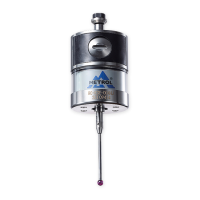3.
Software specification
3-1
Transmitter
Transmitter has 3 modes.
1
Sleep mode
When M code (power ON signal) does not exist, transmitter operates in the Sleep mode to
suppress power consumption.
Transmitter periodically attempts to make communication witht the receiver.
Transmitter and receiver communicate with each other and exchange data every 14 - 27
seconds, if the communication is possible.
In this communication, transmitter sends the battery alarm signal to the receiver while receiver
sends the channel information to transmitter.
In case it stays incommunicable for 30 seconds or longer, it changes channels automatically.
When the transmitter is incommunicable with the receiver, it attempts to communicate by
changing channels.
Once the communication is established, its functions will be recovered within 4 seconds.
2
Measuring mode
Once the transmitter received M code (power ON signal) from the receiver, it enters Measuring
mode.
In this Measuring mode, transmitter communicates with receiver every 2ms.
In case the communication is not successful, the transmitter immediately changes channels.
The LED of the transmitter turns on when the contact touches a workpiece.
The transmitter enters Sleep mode automatically if it stays incommunicable for 1 minute.
Even in this case, the transmitter returns to Measuring mode soon after M code (power ON
signal) is sent from the receiver.
3
Matching mode
This mode is the initial setting.
In this wireless communication system, the transmitter stores ID number.
By using ID number, it performs matching with the receiver so that the receiver stores ID.
Once ID number is stored in the receiver, it performs communication exclusively and is never
affected by any other communication systems.
This ID number (transmitter) is stored nonvolatile.
Note: Matching is necessary every time transmitter is exchanged.

